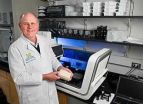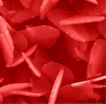(Press-News.org) ANN ARBOR, Mich. — Scientists at the University of Michigan Heath System and their collaborators have found four new DNA "hotspots" that may one day help guide new treatments for psoriasis, one of the most common autoimmune diseases in the country.
Using cutting-edge methods to peer into the hidden genetic underpinnings of the disabling and disfiguring disease, the research, published in Nature Genetics, further maps the as-yet unknown territories of psoriasis and psoriatic arthritis.
The findings could lead to new drug targets and tailored treatments for the skin disease, says James T. Elder, M.D., Ph.D., the Kirk D. Wuepper Professor of Molecular Genetic Dermatology and lead investigator on the study, which included researchers from the Department of Dermatology and School of Public Health.
"This is a hot topic in genetics these days," Elder says. "Even when you add up all the genes that have been found around the world so far, they only account for about 40 percent of the genetic liability to psoriasis. The question among geneticists continues to be, 'Where is the dark matter?' "
The new research builds on past work by the U-M team, whose discoveries have helped to unveil the hereditary factors of the disease and provide scientists with a better understanding of psoriasis' relationship to other autoimmune diseases, such as Crohn's disease, rheumatoid arthritis and lupus.
So far, research worldwide has linked 25 genes to psoriasis, which has a strong hereditary component. Including the new discoveries, Elder's team was involved in finding more than half of them.
Two of the four new susceptibility loci – or "hotspots" – were strongly linked to psoriatic arthritis, a painful and destructive form of arthritis that affects about 1 in 4 psoriasis patients, Elder says.
The roughly 7.5 million Americans with psoriasis also have a higher risk of dying from related cardiovascular problems.
Once a full catalog of psoriasis genes has been identified, scientists hope to generate a "psoriasis gene profile" that can predict one's risk of developing the disease and pave the way for innovative treatments. Current treatments, including different types of immunosuppressive agents, aren't always effective and can cause serious side effects – though a new drug called Stelara (ustekinumab), which targets one of the genes they discovered, has been giving patients months-long relief, Elder says.
U-M Professor of Biostatistics Goncalo R. Abecasis, D. Phil, was instrumental in designing software and statistical methods to analyze more than 6 million genetic variants from more than 4,000 people.
"It was a pretty daunting task," Abecasis says. "We looked in greater detail at genetic variation than is typical so that we can understand the biology behind psoriasis and build better drugs."
INFORMATION:
Methodology: The U-M led, multi-center, international study analyzed data from two recent psoriasis genome-wide association studies involving more than 4,300 individuals, with and without the disease. Those findings were followed up in a three-stage replication study involving more than 8,700 people. The newly identified loci include one at NOS2, one at FBXL19, one near PSMA6-NFKBIA, and one near TRAF3IP2. U-M led the research in the discovery of three of the loci. The TRAF3IP2 locus was reported in a second paper to be published in the same issue of Nature Genetics, in which Elder's collaborators from the University of Kiel in Germany took a leading role.
Additional authors: Philip E. Stuart, Rajan P. Nair, Trilokraj Tejasvi, Johann E. Gudjonsson, Jun Ding, Yun Li, Robert Ike, John J. Voorhees, University of Michigan; Eva Ellinghaus, Andre Franke, University of Kiel, Germany; Stephan Weidinger, Bernadette Eberlein, University of Munich, Germany; Christian Gieger, H. Erich Wichmann, Ludwig-Maximilians University, Germany; Manfred Kunz, University of Lübeck, Germany; Gerald G. Krueger, University of Utah; Anne M. Bowcock, Washington University at St. Louis; Ulrich Mrowietz, Michael Weichenthal, University of Kiel, Germany; Henry W. Lim, Henry Ford Hospital, Detroit; Proton Rahman, Memorial University (Canada); Dafna D.Gladman, University of Toronto, Canada.
Funding: The research was supported by grants from the National Institutes of Health, Ann Arbor Veterans Affairs Hospital, German Ministry of Education and Research, and the Canadian Institutes of Health Research.
Disclosure: U-M has filed for patent protection and is actively engaged in finding a commercial partner who can help bring the developments to market.
Reference: Nature Genetics, published online Oct. 17, 2010. Print publication pending.
Resources:
Psoriasis Genetics Study at U-M,
https://www.derm.med.umich.edu/home.html
U-M Department of Dermatology,
http://www.med.umich.edu/derm/index.shtml
National Psoriasis Foundation,
http://www.psoriasis.org/
Four new psoriasis 'hotspots' identified by U-M geneticists
Discovery may aid in developing new therapies
2010-10-19
ELSE PRESS RELEASES FROM THIS DATE:
Japanese researchers report on liver transplantation studies using animal and iPS cells
2010-10-19
Tampa, Fla. (October 18, 2010) –Two research teams from the Okayama University Graduate School of Medicine (Okayama, Japan) have reported breakthrough studies in liver cell transplantation. One team found that the technical breakthrough in creating induced pluripotent stem cells (iPS) from mouse somatic cells (nonsex cells) in vitro had "implications for overcoming immunological rejection." Whereas a second team using liver cell xenotransplantation - transplanting cells of one species into another (in this case transplanting pig liver cells into mice) - found that transplanted ...
Vitamin D deficiency linked to lung transplant rejection
2010-10-19
MAYWOOD, Ill. -- Vitamin D deficiency is associated with a significant increase in lung transplant rejection, according to research conducted at Loyola University Health System (LUHS). These data were presented Monday at The American Society for Bone and Mineral Research 2010 annual meeting in Toronto, Ontario.
"Vitamin D deficiency is prevalent among lung transplant recipients," said Pauline Camacho, MD, study investigator and director of the Loyola University Osteoporosis and Metabolic Bone Disease Center. "This study shed greater light on the serious impact that this ...
Does clenching your muscles increase willpower?
2010-10-19
The next time you feel your willpower slipping as you pass that mouth-watering dessert case, tighten your muscles. A new study in the Journal of Consumer Research says firming muscles can shore up self-control.
Authors Iris W. Hung (National University of Singapore) and Aparna A. Labroo (University of Chicago) put study participants through a range of self-control dilemmas that involved accepting immediate pain for long-term gain. In one study, participants submerged their hands in an ice bucket to demonstrate pain resistance. In another, participants consumed a healthy ...
Breakthrough in nanocrystals growth
2010-10-19
Argonne, ILL—For the first time scientists have been able to watch nanoparticles grow from the earliest stages of their formation. Nanoparticles are the foundation of nanotechnology and their performance depends on their structure, composition, and size. Researchers will now be able to develop ways to control conditions under which they are grown. The breakthrough will affect a wide range of applications including solar-cell technology and chemical and biological sensors. The research is published in NANOLetters.
As coauthor Wenge Yang of the Carnegie Institution's ...
How do beauty product ads affect consumer self esteem and purchasing?
2010-10-19
A new study in the Journal of Consumer Research found that ads featuring beauty products actually lower female consumers' self-esteem.
"One of the signature strengths of the advertising industry lies in its ability to transform seemingly mundane objects into highly desirable products," write authors Debra Trampe (University of Groningen, the Netherlands), Diederik A. Stapel (Tilburg University), and Frans W. Siero (University of Groningen). In an advertisement, a lipstick situated next to a stiletto heel represents glamour and a teddy bear in an ad for fabric softener ...
Is team science productive?
2010-10-19
PHILADELPHIA - Taking a cue from the world of business-performance experts and baseball talent scouts, Penn Medicine translational medicine researchers are among the first to find a way to measure the productivity of collaborations in a young, emerging institute. They published their findings the most recent issue of Science Translational Medicine.
While metrics exist to measure the contributions of individual scientists, judging the effectiveness of team science has been more challenging. Reasoning that team science produces papers and grants, first author postdoctoral ...
Benign envy sells iPhones, but malicious envy drives consumers to BlackBerries
2010-10-19
People are willing to pay more for products that elicit their envy—but that's only when they are motivated by a positive, benign form of envy, according to a new study in the Journal of Consumer Research.
"Our studies showed that people who had been made envious of someone who owned an iPhone were willing to pay 80 Euros more on average," write authors Niels van de Ven, Marcel Zeelenberg, and Rik Pieters (Tilburg University).
The researchers made some important discoveries about the motivations that result from different kinds of envy. "Note that two types of envy exist: ...
Diabetic adults' conditions improved after phone calls with fellow patients
2010-10-19
The findings, published Oct. 19 in the Annals of Internal Medicine, showed the peer partner program resulted in lower glycated hemoglobin (HbA1c) levels after six months among men with uncontrolled diabetes.
The research was based on a peer partnership program established by the Veterans Affairs Ann Arbor Health System and the University of Michigan Medical School.
Each peer pair received initial brief training in peer communication skills and was expected to communicate by telephone at least once a week about their mutual efforts to improve diabetes control. Program ...
Computational model of swimming fish could inspire design of robots or medical prosthetics
2010-10-19
VIDEO:
The lamprey's body is gray, and the areas where muscle is active are shown with black lines. Note that the active muscle moves backwards slightly faster than the fish...
Click here for more information.
Scientists at the University of Maryland and Tulane University have developed a computational model of a swimming fish that is the first to address the interaction of both internal and external forces on locomotion. The interdisciplinary research team simulated how ...
Generous paupers and stingy princes? Power and consumer spending
2010-10-19
How do people decide how much to spend on purchases for themselves versus others? A new study in the Journal of Consumer Research says it all depends on how powerful we feel at the moment of choice.
"We ask whether the powerful and powerless differentially value the self versus others, and whether this, in turn, translates into observable differences in their spending behavior," write authors Derek D. Rucker, David Dubois, and Adam D. Galinsky (Kellogg School at Northwestern University).
The authors conducted five experiments where they manipulated participants' states ...
LAST 30 PRESS RELEASES:
“Gifted word learner” dogs can pick up new words by overhearing their owners’ talk
More data, more sharing can help avoid misinterpreting “smoking gun” signals in topological physics
An illegal fentanyl supply shock may have contributed to a dramatic decline in deaths
Some dogs can learn new words by eavesdropping on their owners
Scientists trace facial gestures back to their source. before a smile appears, the brain has already decided
Is “Smoking Gun” evidence enough to prove scientific discovery?
Scientists find microbes enhance the benefits of trees by removing greenhouse gases
KAIST-Yonsei team identifies origin cells for malignant brain tumor common in young adults
Team discovers unexpected oscillation states in magnetic vortices
How the brain creates facial expressions
Researchers observe gas outflow driven by a jet from an active galactic nucleus
Pitt student finds familiar structure just 2 billion years after the Big Bang
Evidence of cross-regional marine plastic pollution in green sea turtles
Patients with clonal hematopoiesis have increased heart disease risk following cancer treatment
Stem cell therapy for stroke shows how cells find their way in the brain
Environment: Up to 4,700 tonnes of litter flows down the Rhine each year
Maternal vaccine receipt and infant hospital and emergency visits for influenza and pertussis
Interim safety of RSVpreF vaccination during pregnancy
Stem cell engineering breakthrough paves way for next-generation living drugs
California grants $7.4 million to advance gene-edited stem cell therapy for Friedreich’s ataxia
Victoria’s Secret grant backs cutting-edge ovarian cancer research
Research paves the way for safer colonoscopy bowel prep for people with compromised gut health
JMIR Publications and Sweden's National Library announce renewal and expansion of flat-fee unlimited open access partnership for 2026
A new 3D-printed solar cell that’s transparent and color-tunable
IV iron is the cost-effective treatment for women with iron deficiency anemia and heavy menstrual bleeding
Doing good pays off: Environmentally and socially responsible companies drive value and market efficiency
City of Hope and Cellares to automate manufacturing of solid tumor CAR T cell therapy
Short-circuiting pancreatic cancer
Groundbreaking mapping: how many ghost particles all the Milky Way’s stars send towards Earth
JBNU researchers propose hierarchical porous copper nanosheet-based triboelectric nanogenerators
[Press-News.org] Four new psoriasis 'hotspots' identified by U-M geneticistsDiscovery may aid in developing new therapies



